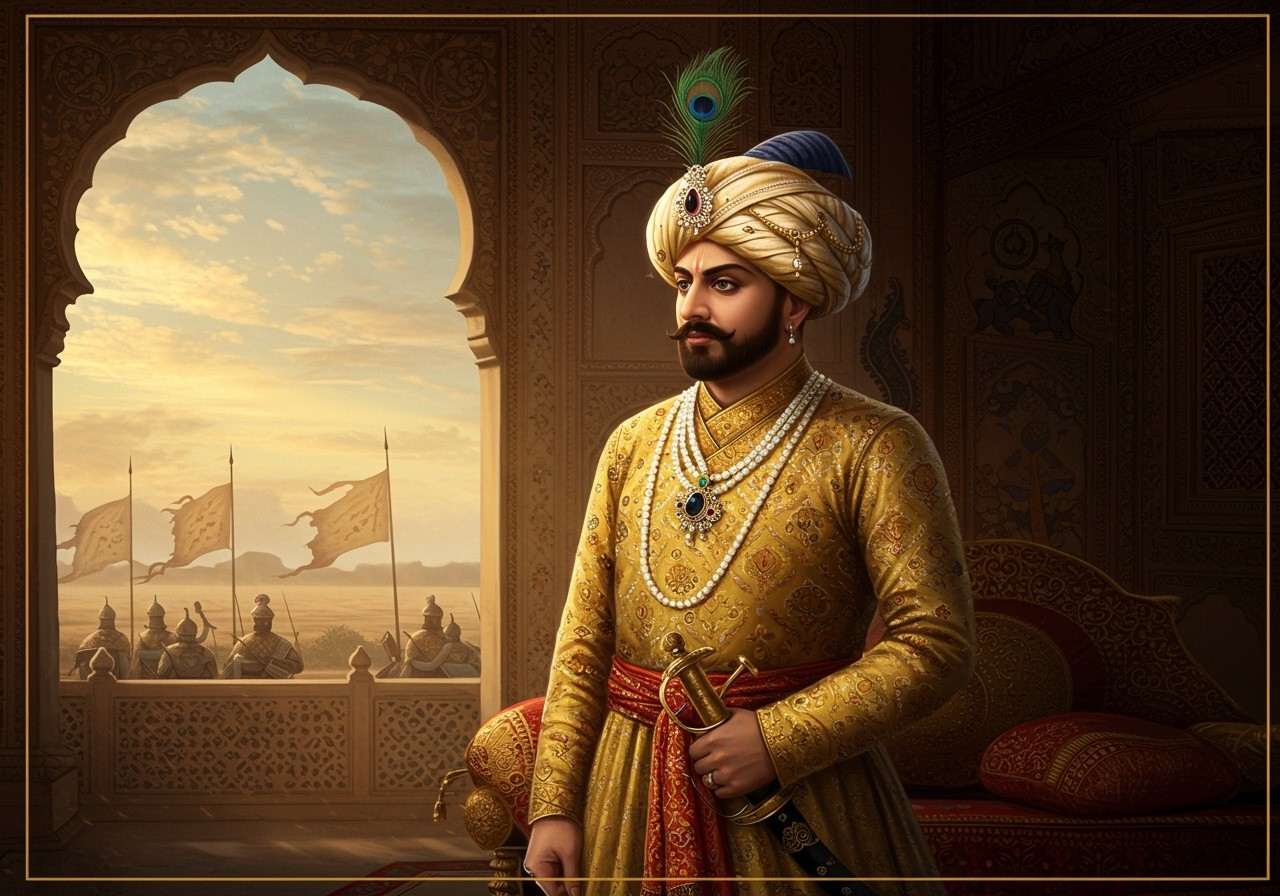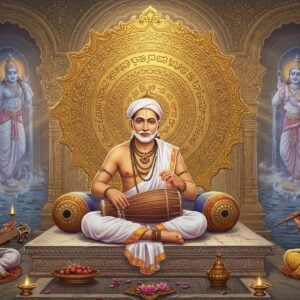
In the rich and complex tapestry of Indian history, some stories are of glorious victories, while others are poignant tales of the end of an era. The life of Shams-ud-Din Muzaffar Shah III is one such story. He was the last Sultan of the Muzaffarid dynasty, a ruler whose name is tied forever to the fall of the independent Gujarat Sultanate and its absorption into the mighty Mughal Empire. His story is not just a chapter in a history book; it’s a moving reminder of the ever-turning wheels of time and destiny.

A King in Name Only: The Rise to a Shaky Throne
Muzaffar Shah III’s journey to the throne began not with celebration, but with political intrigue. After the assassination of the previous sultan, a powerful noble named Itimad Khan placed a young boy on the throne in 1561. This boy was introduced as Muzaffar Shah III. Itimad Khan claimed he was a posthumous son of a previous king, but whispers in the court suggested he was actually a common boy named Nathu.
From the very beginning, his crown felt heavy and hollow. The real power was not in his hands but was held firmly by his nobles, who managed the state, made alliances, and commanded the armies. Muzaffar Shah III was a sultan in name, a symbol for a kingdom that was slowly crumbling from within due to fierce rivalries among its powerful lords.
The Shadow of the Mughals and the Fall of a Kingdom
While Gujarat was weakened by its internal conflicts, a formidable power was rising in the north – the Mughal Empire under the ambitious Emperor Akbar. Seeing the disarray in the Sultanate, Akbar saw an opportunity to annex the prosperous coastal region of Gujarat.
In 1573, the inevitable happened. The Mughal army marched into Gujarat, and the Sultanate fell. Muzaffar Shah III was captured and taken as a prisoner to Agra. For a decade, he lived in captivity, a fallen king dreaming of the kingdom he had lost.
A Fleeting Glimpse of Freedom
But his story was not over yet. In a dramatic turn of events, Muzaffar Shah III escaped from his prison in 1583. With the help of loyal nobles who were unhappy with Mughal rule, he managed to gather an army and, for a brief, shining moment, reclaimed his throne. Imagine the hope and courage it must have taken! For a short while, it seemed as if the Gujarat Sultanate would rise from the ashes.
However, this victory was short-lived. Akbar sent his brilliant general, Abdul Rahim Khan-I-Khana, to crush the rebellion. In January 1584, the dream ended in a decisive defeat. Muzaffar Shah III was once again a king without a kingdom, this time a fugitive on the run.
The Final Years and a Tragic End
For years, Muzaffar Shah III wandered, seeking refuge with different rulers, including Jam Sataji of Nawanagar. His final stand was at the Battle of Bhuchar Mori in 1591, a fierce conflict where his loyalists fought bravely but were ultimately defeated. Finally, betrayed and surrendered to the Mughals, Muzaffar Shah III saw no way out. In 1592, faced with the humiliation of being paraded in chains, he took his own life. It was a tragic end to a life defined by struggle.
Why His Story Matters to Us Today
You might wonder, why should we remember a king who ruled mostly in name and ultimately lost his kingdom? The significance of Muzaffar Shah III’s reign lies in the monumental transition it represents. His life marks the end of a proud, independent regional power and the consolidation of the pan-Indian Mughal Empire. It’s a powerful lesson on how internal disunity can open the doors to external forces.
His story is a vital part of the history of Gujarat and, by extension, all of India. It helps us understand the complex political landscape of pre-colonial India and the forces that shaped our nation.
Connecting with Our Roots Through Timeless Traditions
Dynasties rise and fall, but what endures is our rich cultural and spiritual heritage. Learning about our past deepens our connection to our roots. This very connection is what we celebrate in our daily rituals and festive pujas. Keeping these traditions alive is our way of honouring the journey of our ancestors.
At poojn.in, we are committed to helping you keep these sacred traditions vibrant. Whether you’re setting up a new home temple or preparing for a special festival, we provide authentic, high-quality items to support your spiritual journey. Explore our collection of beautiful holy idols that bring divinity into your home, or find complete puja kits that make performing rituals simple and meaningful.
Frequently Asked Questions About Muzaffar Shah III
Many people have questions about this fascinating historical figure. Let’s clear up some common points.
-
Who exactly was Muzaffar Shah III?
He was the last ruler of the Muzaffarid dynasty in the Gujarat Sultanate, reigning nominally from 1561 to 1573. His reign is remembered more for the political turmoil and the eventual end of the Sultanate than for his personal accomplishments, as he was largely a puppet ruler controlled by his ambitious nobles.
-
What were the biggest challenges he faced?
His rule was plagued by constant challenges. Internally, he had to navigate the treacherous politics of his own court where nobles fought for power. Externally, he faced the unstoppable expansion of the Mughal Empire under Emperor Akbar, which ultimately proved to be the downfall of his kingdom.
-
What is his lasting impact on Indian history?
His reign is historically significant because it marks a crucial turning point. The end of the Gujarat Sultanate and its merger into the Mughal Empire was a major step in the consolidation of Mughal power across India, changing the political and cultural map of the subcontinent forever.
A Legacy Etched in Time
The story of Muzaffar Shah III is a powerful reminder of the human side of history. It’s a tale of a man caught in circumstances far beyond his control, a symbol of a dying era. By remembering him, we don’t just recall dates and events; we connect with a past that is full of struggle, hope, and lessons that are relevant even today. His legacy is a thread in the grand, beautiful weave of India’s history.


